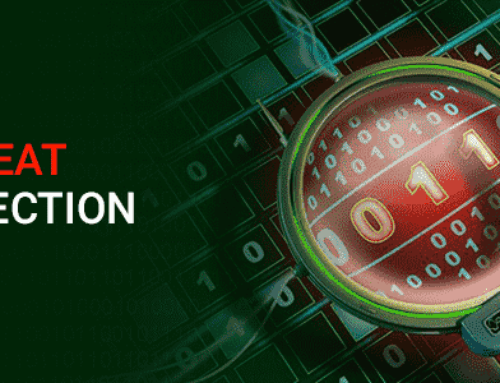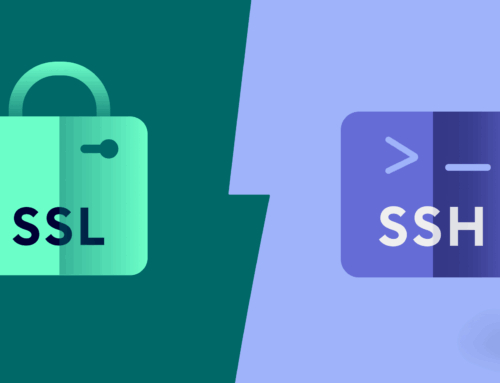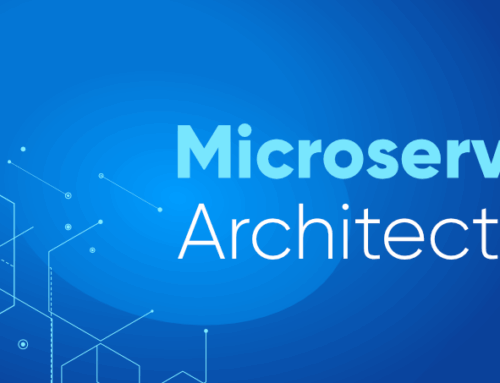
Privilege Access Management (PAM): What It Is & How It Works
In today’s digital landscape, safeguarding sensitive data and protecting intellectual property is paramount for any enterprise, which is why robust privileged identity management is essential. Privilege Access Management (PAM) is a critical security solution designed to manage and secure access to privileged accounts, prevent unauthorized access, and mitigate the risk of data breaches. Teamwin Global Technologica empowers its clients with comprehensive IT security solutions, including a PAM system, to fortify their businesses against potential threats. Understanding how PAM works and its importance in securing your IT infrastructure is essential for maintaining the integrity of your organization.
Understanding Privilege Access Management
Definition of Privilege Access Management
Privilege Access Management (PAM) is a specialized security strategy focused on managing and controlling access to privileged accounts within an organization, ensuring compliance with least privilege access principles. Offered as part of the solutions by Teamwin Global Technologica, PAM involves the implementation of robust access control measures, credential management, and session management to protect sensitive systems and data. This security solution is designed to manage privileged identities, monitor privileged activities, and secure privileged sessions to prevent unauthorized access, ensuring that only authorized users with the appropriate level of access can execute elevated tasks.
Importance of Managing Privileged Access
Managing privileged access is crucial for enterprise IT directors and CISOs who are responsible for safeguarding sensitive data and protecting against insider threats. Tools such as the Endpoint Privilege Tool (AdminbyRequest) are specifically designed to secure endpoints by managing local admin privileges, thereby reducing security risks. By implementing a PAM solution, organizations can protect privileged accounts, manage privileged access, and prevent potential data breaches. This ensures that sensitive information remains secure and that the organization’s infrastructure is protected against unauthorized access and other security vulnerabilities.
Types of Privileged Accounts
Privileged accounts are special user accounts that have elevated access rights, necessitating vigilant monitoring by security teams., enabling them to perform critical functions that regular users cannot. These include access to critical systems, databases, and networks. The types of privileged accounts can vary, requiring careful management to ensure security in the realm of privileged identity management. Some common types of privileged accounts that require least privilege access are:
- Local admin accounts
- Domain admin accounts are critical and should be managed under a strict pam system to prevent unauthorized account access.
- Service accounts
By implementing PAM best practices, organizations can manage and secure access to privileged accounts, ensuring that only authorized users have access and that all privileged activities are monitored and controlled effectively.
Implementing PAM Solutions
Steps to Implement PAM
Implementing a Privilege Access Management (PAM) solution is a structured process that begins with a thorough assessment of your organization’s existing identity and access management practices, including just-in-time access strategies. Here are the key steps involved:
- Identify all privileged accounts and their associated access rights, ensuring a comprehensive understanding of your current security posture.
- Prioritize the deployment of access control measures, including role-based access control, to manage privileged identities effectively. This phase involves configuring access permissions and privileged credentials to ensure secure privileged access.
Continuously monitor privileged activities and privileged sessions to detect any anomalies, monitor privileged sessions, and utilize session management tools to secure privileged accounts against unauthorized access.
PAM Security Best Practices
To maximize the effectiveness of your PAM solution, adhere to established security best practices. Here are some key steps to follow:
- Implement robust password management protocols to manage privileged account credentials securely. Regularly update and rotate privileged passwords to minimize the risk of unauthorized access and enhance your overall identity security.
- Employ privileged session management to monitor and record sessions of privileged users, ensuring accountability and traceability of actions.
- Use the Endpoint Privilege Tool (AdminbyRequest) to manage local admin privileges, thereby reducing security risks at the endpoint level.
Embrace a proactive approach by continuously assessing and refining your security measures to safeguard privileged access.
Managing Privileged Credentials
Managing privileged credentials is a critical component of any PAM strategy, requiring meticulous attention to detail to avoid potential security risks. Begin by cataloging all privileged user accounts and their associated credentials, ensuring that access is strictly controlled and monitored. Implement credential management solutions that offer automated password rotation and access security features to prevent unauthorized access. The Endpoint Privilege Tool (AdminbyRequest) can also assist in regaining control over user privileges, particularly by safeguarding endpoints and managing local admin privileges efficiently. By securing privileged credentials, organizations can protect against data breaches and maintain the integrity of their IT infrastructure.
PAM and ISO 27001
How PAM Supports ISO 27001 Controls
Privilege Access Management (PAM) plays a pivotal role in supporting ISO 27001 controls, offering a robust framework to secure privileged identities and manage user access rights effectively. For a Chief Information Security Officer (CISO), aligning with ISO 27001 is a top priority to ensure regulatory compliance. Teamwin Global Technologica’s expertise in cloud security and regulatory assurance provides a comprehensive strategy to meet these compliance needs. By implementing a PAM solution, organizations can control access to privileged accounts, monitor privileged activities, and secure privileged sessions, ensuring adherence to ISO 27001’s stringent security requirements.
Audit Requirements for PAM
Compliance officers and risk managers focus heavily on meeting the regulatory frameworks and audit requirements, such as those dictated by ISO 27001. A well-structured PAM solution is integral to maintaining audit readiness by ensuring that privileged access is managed, monitored, and documented meticulously. The ability to track privileged user activities and generate comprehensive audit trails is crucial for demonstrating compliance during audits. Teamwin Global Technologica provides solutions that facilitate seamless integration with existing identity and access management systems, ensuring that your organization is always prepared for an audit, with all privileged credentials and access rights tightly controlled.
Integrating PAM with ISO 27001 Compliance
Integrating PAM with ISO 27001 compliance involves a strategic approach to secure privileged accounts while minimizing security risks. This integration ensures that organizations not only protect their sensitive systems but also align with global cybersecurity standards, enhancing their overall identity security. By leveraging PAM, enterprises can implement role-based access control, manage privileged passwords effectively, and secure remote access to critical systems. Teamwin Global Technologica empowers clients by providing a PAM solution that is not only compliant with ISO 27001 but also enhances their overall security posture, offering peace of mind and ensuring that their infrastructure remains secure and resilient against unauthorized access.
Managing Privileged Access and Security Breaches
Identifying Security Breaches Related to Privileged Access
Security breaches related to privileged access pose substantial threats to any organization, often resulting in significant data loss and financial damage. The Endpoint Privilege Tool is a sophisticated solution designed to protect sensitive data from potential breaches, addressing the primary concerns of Chief Information Security Officers (CISOs) who are deeply worried about data breaches and insider threats. By implementing robust privilege access management strategies, enterprises can effectively monitor privileged activities and secure privileged sessions, reducing the risk of unauthorized access. Identifying and responding swiftly to breaches is crucial to safeguarding valuable data and maintaining organizational integrity.
Session Management in PAM
Session management within a PAM framework is a vital security solution that ensures all privileged activities are monitored and controlled diligently. Through session management, organizations can track and record the actions of privileged users to prevent unauthorized access and detect any anomalies that may indicate a security risk. By managing privileged sessions effectively, enterprises can ensure that elevated access is granted only to authorized users with the appropriate level of access. This capability not only protects sensitive data but also ensures compliance with regulatory standards by providing comprehensive audit trails of all privileged activities.
Remote Access and Secure Privileged Sessions
In a world where remote work has become the norm, securing remote access and managing privileged sessions are more critical than ever. A robust PAM solution enables organizations to control access to privileged accounts even when employees are working offsite. Secure privileged access is achieved through advanced access control measures and credential management, ensuring that remote connections do not become a vulnerability. By implementing role-based access control and secure privileged session management, enterprises can safeguard their IT infrastructure against potential security breaches, maintaining confidence in their remote access capabilities.
Conclusion
Summary of PAM Benefits
Privilege Access Management (PAM) offers numerous benefits that are essential for safeguarding enterprise data and intellectual property, particularly through effective user access controls. Teamwin Global Technologica provides a comprehensive PAM solution that helps organizations regain control over user privileges and protect sensitive data from potential breaches. By managing privileged identities, monitoring privileged activities, and securing privileged sessions, PAM solutions fortify businesses against unauthorized access. These measures not only protect critical systems but also ensure compliance with regulatory standards, offering peace of mind and maintaining the integrity of your organization’s IT infrastructure.
Future of Privilege Access Management
The future of Privilege Access Management is set to evolve alongside the growing complexity of cybersecurity threats, necessitating enhanced identity security measures. As organizations continue to embrace digital transformation, the need for advanced PAM solutions that can adapt to new challenges will become increasingly important. Innovations in AI and machine learning are expected to enhance the capabilities of PAM, enabling more proactive monitoring and response strategies. By staying ahead of emerging threats, PAM solutions will continue to play a crucial role in protecting sensitive data and ensuring the security of privileged accounts, offering organizations a robust defense against potential breaches.
Call to Action for Implementing PAM Solutions
Don’t let security vulnerabilities compromise your organization’s integrity—act now to safeguard your endpoints with a reliable PAM solution that ensures access to sensitive information is tightly controlled. Teamwin Global Technologica is dedicated to empowering its clients through a comprehensive suite of IT security solutions, ensuring your enterprise is fortified against potential threats. Seize this opportunity today and fortify your defenses before it’s too late. Your satisfaction is our priority, and we are committed to delivering a PAM solution that secures your infrastructure and provides peace of mind. Contact us to learn more about implementing a tailored PAM strategy for your organization.
Key Benefits of Privileged Access Management
- Enhanced security posture by minimizing security risks related to privileged accounts.
- Implementation of least privilege access ensures users have only the necessary access rights.
- Effective password management for privileged credentials reduces the chances of unauthorized access.
- Improved identity security through identity and access management practices.
- Facilitates session management to monitor and control privileged sessions.
- Enables just-in-time access for temporary privileges to manage privileged actions.
- Allows for remote access to critical systems while maintaining security.
- Strengthens access control by targeting privileged identities and activities.
- Supports monitoring privileged sessions to detect and respond to suspicious behavior.
- Reduces the risk of security breaches through comprehensive PAM solutions.
- Provides a framework for role-based access to sensitive information.
- Streamlines management helps security teams ensure compliance and governance.
What is a privileged access management solution?
A privileged access management solution is a security tool designed to control and monitor access to privileged accounts and credentials within an organization. It helps ensure that only authorized users can gain access to sensitive systems and data, thereby minimizing the risk of unauthorized access and potential data breaches.
What are the best practices for privileged access management?
Privileged access management best practices include regularly reviewing and auditing privileged accounts, implementing least privilege access principles, using strong authentication methods, and training security teams on recognizing potential threats. These practices help organizations manage their privileged accounts effectively and reduce vulnerabilities.
What are privileged identities in the context of access security?
Privileged identities refer to user accounts that have elevated access rights to critical systems and data. These accounts pose a significant security risk because they can be exploited by malicious actors if not properly managed. Organizations must implement stringent controls to monitor and manage privileged identities to secure their systems.
How does privileged session management enhance security?
Privileged session management enhances security by monitoring and controlling access during privileged sessions. This includes recording session activities, enforcing session time limits, and providing real-time alerts for suspicious behavior. By managing privileged sessions, organizations can maintain tighter control over access to secure systems.
What is elevated access and why is it important?
Elevated access refers to the rights granted to users that allow them to perform tasks beyond their regular permissions, such as system administration or configuration changes. It is important because it enables users to perform necessary functions, but it also requires careful management to prevent misuse and potential security breaches.
What is privileged account management and its significance?
Privileged account management involves the processes and technologies used to manage privileged accounts and credentials within an organization. Its significance lies in its ability to protect sensitive data from unauthorized access, reduce the risk of breaches, and facilitate compliance with regulatory requirements.
How can organizations secure privileged access?
Organizations can secure privileged access by implementing multi-factor authentication, conducting regular audits of privileged accounts, and utilizing automated tools to monitor and manage access requests. These measures help ensure that access to resources is controlled and that privileged accounts are not left vulnerable.
What are the common risks associated with privileged accounts?
Common risks associated with privileged accounts include unauthorized access, potential insider threats, and the exploitation of credentials by external attackers. Breaches often involve privileged accounts, which can lead to significant data loss and damage to an organization’s reputation if not properly managed.
How can access management help organizations?
Access management helps organizations by providing a framework to manage user access to resources effectively. It enables organizations to enforce policies, reduce the risk of breaches, and ensure compliance with regulations. By managing privileged accounts and permissions, organizations can minimize vulnerabilities and enhance overall security posture.






